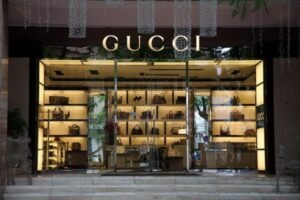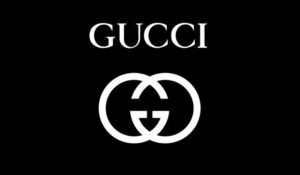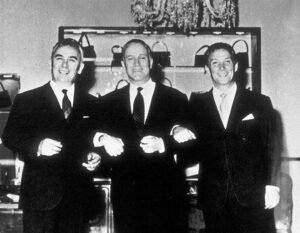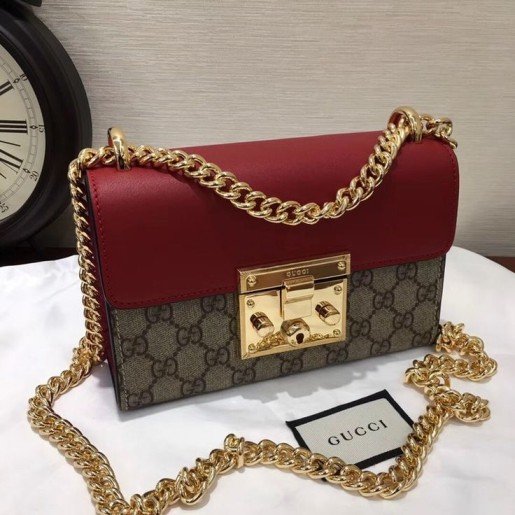“Gucci” founded by Gucci o Gucci in Florence, Italy, in 1921, has evolved from a small leather goods company into one of the world’s most renowned luxury fashion brands. The success story of this company is a fascinating journey of innovation, creativity, and strategic management.
-
Gucci’s Heritage and Craftsmanship:
It started as a maker of fine leather goods, particularly saddlery and luggage. it’s commitment to quality craftsmanship and attention to detail quickly earned the brand a reputation for excellence.

-->Founding Principles:
Guccio Gucci, the founder , established the brand in Florence, Italy, in 1921, with a vision to create exceptional leather goods. He drew inspiration from his background in fine leatherworking.
-->Fine Leather Goods:
From the beginning, The company set itself apart by producing finely crafted leather goods, including luggage, handbags, and accessories.
-->Innovative Designs:
Gucci’s artisans were known for their innovative approach to design, incorporating unique materials and techniques. One of the most iconic examples is the Bamboo Bag, introduced in 1947.
- Iconic Design:
Gucci became synonymous with luxury and sophistication, thanks to its iconic designs such as the Bamboo Bag, introduced in 1947, and the GG logo pattern, which became a status symbol for the elite.

-->GG Logo and Monogram:
One of Gucci’s most iconic design elements is its GG logo and monogram pattern, which was first introduced in the 1960s. This interlocking double G motif has become synonymous with the brand and is instantly recognizable worldwide.
-->Bamboo Bag:
Introduced in 1947, the Bamboo Bag is another iconic design that has become synonymous with Gucci. The bag’s distinctive bamboo handles were inspired by the scarcity of traditional materials during World War II and have since become a symbol of the brand’s craftsmanship and innovation.
-->Flora Print:
The Flora print, created in 1966 for Princess Grace of Monaco, has become one of Gucci’s most iconic and enduring designs.
- Innovative Marketing:
It was one of the first luxury brands to expand its product offerings beyond leather goods to include ready-to-wear clothing, shoes, accessories, and fragrances.

-->Digital Presence and Social Media:
Gucci has embraced digital platforms and social media to connect with consumers and create immersive brand experiences. The brand maintains active profiles on platforms like Instagram, Twitter, and TikTok, where it shares behind-the-scenes content, fashion inspiration, and updates on new collections.
-->Gucci Beauty and Fragrances:
Gucci has expanded its product offerings to include beauty and fragrances, leveraging its brand equity and aesthetic to create unique and desirable products.
-->Collaborations and Partnerships:
Gucci has collaborated with various artists, designers, and brands to create limited edition collections and exclusive partnerships.
- Family Legacy:
After Guccio Gucci’s death in 1953, his sons took over the business and expanded it globally. Despite some internal family conflicts and legal battles over the years, the Gucci brand remained resilient and continued to grow.

-->Founding Vision:
The founder of Gucci, established the brand in 1921 with a vision to create exceptional leather goods inspired by his background in fine leatherworking and experiences working in luxury hotels.
-->Multigenerational Leadership:
Gucci remained a family-owned and operated business for several decades, with Guccio Gucci’s sons—Aldo, Vasco, and Rodolfo—playing key roles in the company’s growth and expansion.
-->Global Expansion:
Under the leadership of Guccio Gucci’s sons, Gucci expanded globally, opening boutiques in major cities around the world. The brand’s presence in international markets helped solidify its reputation as a symbol of luxury and sophistication.
- Revival under Creative Direction:
In the 1990s and early 2000s, Gucci faced challenges due to changes in consumer tastes and increased competition. However, the brand experienced a remarkable revival under the creative direction of Tom Ford, who injected a bold and sensual aesthetic into Gucci’s designs, revitalizing its image and profitability.

--> Alessandro Michele's Vision:
In January 2015, Alessandro Michele was appointed as the creative director of company, succeeding Frida Giannini. Michele brought a fresh perspective to the brand, with his eclectic and whimsical designs that challenged traditional notions of luxury fashion.
-->Bold Aesthetic:
Under Michele’s leadership, The company underwent a dramatic transformation, departing from the sleek and sensual aesthetic of the Tom Ford era. Michele’s designs were characterized by bold colors, clashing patterns.
-->Reinterpretation of Icons:
Michele reinterpreted Gucci’s iconic symbols and motifs, such as the GG logo, the Flora print, and the Bamboo Bag, infusing them with his own creative vision and personal touch.
want to Know about Work life balance managing burnout and stress? Click here

1 thought on “Success story of “Gucci””